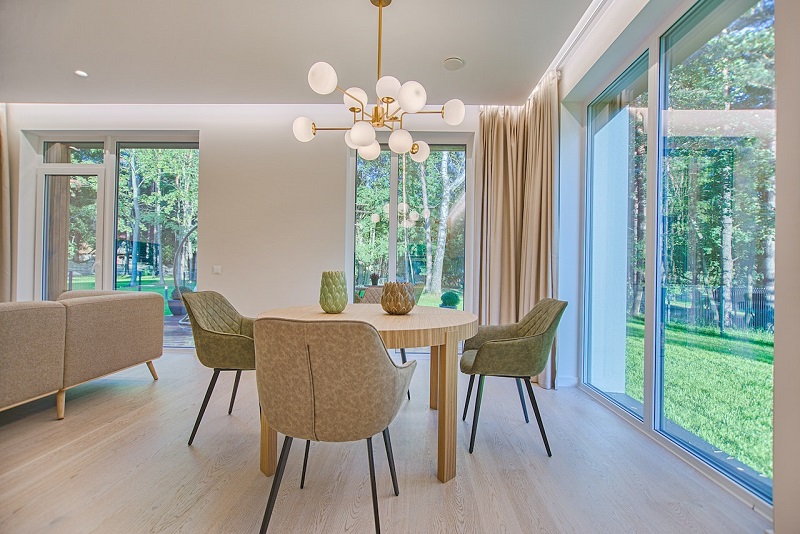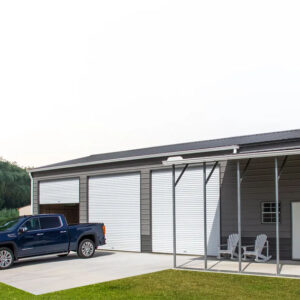Designing a window treatment for your home can be overwhelming, but layering is one of the most effective techniques. It involves combining different materials, textures, and colors to create a unique look. Layering different window treatments is an ideal way to create the perfect balance of style and practicality.
Common window treatments that you can use for layering are curtains, drapes, shades, shutters, and blinds. Each of these elements offers different benefits depending on your needs and preferences. Read on to find out more about the benefits of layering window treatments.
Benefits of Layering Window Treatments
1. Aesthetic Appeal: Adding layers to your window treatments can add an extra layer of sophistication to your room. With the right combination of colors, textures, and patterns, you can create a stunning look that will make your windows impressive.
2. Privacy & Security: It is also a great way to provide extra privacy and security for your home. Using two or more layers of window treatments, you can block out unwanted views from outside and keep people from peeking into your home.
3. Light Control: Layering window treatments is also a great way to control the amount of light that enters your room. By combining shades and drapes, you can adjust the level of light and privacy you need at any given time.
4. Insulation: Adding layers of window treatments is an effective way to increase the insulation of your windows. Adding another layer to your window treatments can reduce heat loss and save energy costs in the long run.
5. Flexibility: Layering window treatments gives you the ability to adjust your window treatments according to the season or occasion. You can easily switch between light, airy fabrics for summer and heavy drapes for winter.
Mastering the Art of Layering Window Treatments: Tips from a Pro
Start by choosing a base layer, such as curtains or blinds, and then add another layer over this, like sheers or valances. Be sure to play around with different colors, textures, and patterns to create a unique look. You can also use shades, shutters, or drapes to create unique looks.
If you’re feeling overwhelmed by the choices, consider hiring a professional window treatment designer like Bumble Bee Blinds to help you choose the right window treatments and create a layered look perfect for your home.
Practical and Stylish Solutions
Not only do layering your window treatments provide a range of benefits, but it also gives you the flexibility to adjust your window treatments according to the season or occasion. With the right combination, you can create a unique look that will be both practical and stylish. Here are some ideas you can apply when designing layers for your window treatments.
1. Simple and modern: Choose two simple colors and two different textures to create a timeless look that is perfect for any style of room. For example, you could opt for white linen curtains and a sheer white shade for the top layer. You can also add some texture with Roman shades or rattan blinds.
2. Neutral tones: You can also opt for neutral tones and light fabrics such as sheer or linen curtains to create an airy, natural feel in your room. Choose a neutral color for the base layer and then add a patterned or brightly colored valance for an extra touch of style.
3. Bold and bright: Layer bold colors and patterns to create a vibrant, eye-catching look that will really stand out in your space. Start with a bright color for the base layer, and then add another bold pattern or blinds on top.
4. Rustic charm: Cotton, linens, wool, and plaids all offer an organic feel that is perfect for rustic-style rooms. For example, you could opt for a pair of white cotton curtains and then layer it with a plaid Roman shade.
5. Elegant look: Opt for luxurious fabrics such as velvet and silk to create a sophisticated, elegant look in your room. Choose a neutral color for the base layer, then add an extra touch of glamor with richly colored drapes or swags.
Things to Consider When Layering Window Treatments
1. Functionality: The most important thing to consider when layering your window treatments is functionality. Think about how you will use the room and how much light you need to let in. This will help you choose the right combination of window treatments for your space.
2. Privacy: Choose thicker fabrics and darker colors to create more opacity and block out prying eyes. Layering window treatments with different hues can also create more privacy while adding a unique design element to the room.
3. Style: When layering, think about colors, textures, patterns, and fabrics that will create the right look for your space. Keep trying out various combinations until you discover the one that suits you the most. Start by choosing banded shades for the base layer and then using solid color fabric for the top layer to create a unique look.
4. Texture: Add texture to window treatments by layering different fabrics, such as linen and silk, and blinds of different styles. This will create an interesting contrast that will help to make your room look more stylish.
5. Fabric: Consider the material of your window treatments and how easy it will be to clean or maintain them. Lighter fabrics may require more frequent cleaning, while heavier materials like velvet and silk can be harder to clean but offer a beautiful look worth the effort.
Conclusion
Layering window treatments is the perfect way to add practicality and style to your home’s décor. From simple and modern themes to bold and bright designs, there are many ways you can layer window treatments to create a personalized stylish look for your home. Keep in mind the functionality, how much privacy you need, and the type of fabric you choose when designing window treatment layers for the best results. With a little bit of creativity, you can create a beautiful and unique look for your room that will impress your family and guests.




